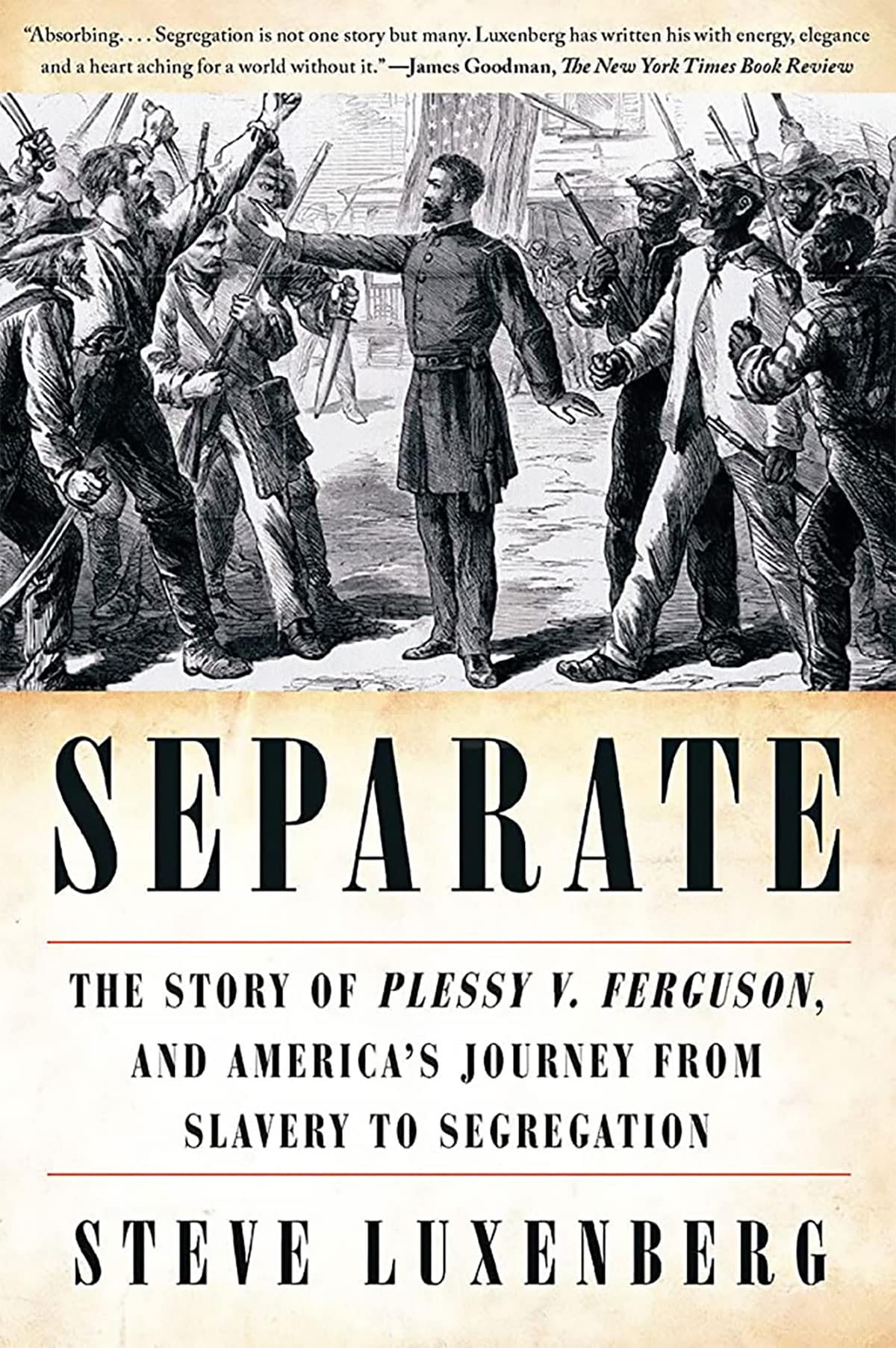Mississippi Today
Jimmy Robertson’s death conjures memories of landmark 1992 race

Even his detractors would recognize James Robertson, who died earlier this month, as one of the brightest individuals to have served on the Mississippi Supreme Court.
Robertson, a Harvard educated attorney, University of Mississippi Law School professor and former editor of the Ole Miss student newspaper, was appointed to the state's highest court in 1983 by then-Gov. William Winter to fill a vacancy. He was defeated in 1992 after twice winning election to the Supreme Court.
Robertson's tenure on the court and his election loss in 1992 are noteworthy.
In 1992, James Lawton Robertson, known as Jimmy, was challenged by James L. Roberts Jr., also known as Jimmy. At the very least, the election was unique because of the confusion it caused voters.
But it was noteworthy for more than the similarity of the candidates' names.
Before 1992, most Supreme Court races were low profile. Occasionally there were hotly contested elections for open seats, but often candidates ran unopposed. And it was especially unusual for an incumbent like Robertson to face serious opposition and even more unusual for an incumbent to lose.
Before Robertson lost in 1992, three incumbents on the nine-member Supreme Court dating back to 1948 were defeated, according to research by Leslie Southwick, a judge on the U.S. 5th Circuit Court of Appeals. He provided a comprehensive history of the Supreme Court elections while an adjunct professor at the Mississippi College School of Law. His article, published in 1998 in the school's law review, was titled Mississippi Supreme Court: A Historical Perspective 1916-1996.
The 1992 race was a watershed event because it ushered in more high profile Supreme Court races where more money was spent and where various special interest groups aligned behind candidates.
Both Roberts and Robertson touted impressive qualifications and had unique personalities. Robertson was known for his ability to turn a phrase. Roberts has a self-deprecating sense of humor. Robertson had been on the court for almost a decade. Roberts, a Pontotoc County native, was a chancery judge, and previously served as the public safety commissioner in the administration of Gov. Bill Allain.
Both contributed to the state as public servants.
In 1992, Roberts was endorsed by the Mississippi Prosecutors Association. Efforts were made to paint Robertson as too liberal and soft on crime. Southwick wrote, “An anonymous circular was disseminated throughout the campaign, a document distributed by others and not by Chancellor Roberts, that focused on different opinions by Justice Robertson on criminal cases.” Southwick said the circular misrepresented at least one Robertson opinion, making it seem he opposed the death penalty when in fact his concerns were with one “problematic jury instruction” in a death penalty case.
At any rate, Roberts won 39,601 votes to 29,632 in the north Mississippi district. The race was one of the most expensive to date: Robertson spent $152,000 to $124,000 for Roberts.
It should be noted that two years before the 1992 race, another incumbent was defeated. Justice Joel Blass, a former Gulf Coast legislator, lost to Chuck McRae. That race was different, though, in that Blass had just been appointed by then-Gov. Ray Mabus to fill a vacancy and did not take office until February of 1989 — just before the 1990 election. McRae won with the backing of the Mississippi Trial Attorneys and the Mississippi Prosecutors Association and spent $183,500 to $100,500 for Blass.
The 1990 McRae-Blass race and the 1992 Roberts-Robertson contest appeared to be a harbinger of tougher times for Supreme Court incumbents. After only four incumbents lost between 1948 and 1992, another four incumbents were defeated between 2000 and 2008. In most of those races, contributions to the candidates came from business groups and from trial attorneys who were on opposite ends of civil justice issues.
That 1992 race concluded with Roberts resigning in 1999 before his term ended to run an unsuccessful campaign for governor. He later said resigning from the Supreme Court was a mistake. But he eventually was appointed in 2007 to a circuit court judicial post in northeast Mississippi by then-Gov. Haley Barbour. He retired in 2020.
After his defeat, Robertson practiced law in Jackson, wrote books and articles and was lauded upon his death.
Michael B. Wallace, a staunch Republican who practiced law with Robertson, said in a Supreme Court news release, “He was not only brilliant. He was courageous. As a judge he would apply the law as he saw it, no matter where the chips would fall … He thought people deserved a fair trial and he was willing to do what was necessary to make that happen … He believed very strongly and had the courage to act upon it.”
This article first appeared on Mississippi Today and is republished here under a Creative Commons license.
Did you miss our previous article…
https://www.biloxinewsevents.com/?p=314799
Mississippi Today
On this day in 1896


MAY 18, 1896

The U.S. Supreme Court ruled 7-1 in Plessy v. Ferguson that racial segregation on railroads or similar public places was constitutional, forging the “separate but equal” doctrine that remained in place until 1954.
In his dissent that would foreshadow the ruling six decades later in Brown v. Board of Education, Justice John Marshall Harlan wrote that “separate but equal” rail cars were aimed at discriminating against Black Americans.
“In the view of the Constitution, in the eye of the law, there is in this country no superior, dominant, ruling class of citizens,” he wrote. “Our Constitution in color-blind and neither knows nor tolerates classes among citizens. In respect of civil rights, all citizens are equal before the law. The humblest is the peer of the most powerful. The law … takes no account of his surroundings or of his color when his civil rights as guaranteed by the supreme law of the land are involved.”
This article first appeared on Mississippi Today and is republished here under a Creative Commons license.
Did you miss our previous article…
https://www.biloxinewsevents.com/?p=359301
Mississippi Today
Renada Stovall, chemist and entrepreneur
Renada Stovall sat on the back deck of her rural Arkansas home one evening, contemplating life when she had a life-altering epiphany…
“I gotta get out of these woods.”
She heard it as clear as lips to her ear and as deep as the trees surrounding her property. Stovall's job as a chemist had taken her all over the country. In addition to Arkansas, there were stints in Atlanta, Dallas and Reno. But she was missing home, her parents and friends. She also knew, she needed something else to do.
“I thought, what kind of business can I start for myself,” said Stovall, as she watered herbs growing in a garden behind her south Jackson home. Some of those herbs are used in her all-natural products. “I know when I lived in Reno, Nevada, where it's very hot and very dry, there really weren't products available that worked for me, my hair, and my skin suffered. I've got a chemistry degree from Spelman College. I took the plunge and decided to create products for myself.”

In 2018, Stovall's venture led to the creation of shea butter moisturizers and natural soaps. But she didn't stop there, and in December 2022, she moved home to Mississippi and got to work, expanding her product line to include body balms and butters, and shampoos infused with avocado and palm, mango butter, coconut and olive oils.
Nadabutter, which incorporates Renada's name, came to fruition.

Stovall sells her balms and moisturizers at what she calls, “pop-up markets,” across the state during the summer. She's available via social media and also creates products depending on what of her ingredients a customer chooses. “My turmeric and honey is really popular,” Stovall added.
“The all-natural ingredients I use are great for conditioning the skin and hair. All of my products make you feel soft and luscious. The shea butter I use comes from West Africa. It's my way of networking and supporting other women. And it's my wish that other women can be inspired to be self-sufficient in starting their own businesses.”





This article first appeared on Mississippi Today and is republished here under a Creative Commons license.
Mississippi Today
On this day in 1954
MAY 17, 1954

In Brown v. Board of Education and Bolling v. Sharpe, the U.S. Supreme Court unanimously ruled that the “separate but equal” doctrine in Plessy v. Ferguson was unconstitutional under the 14th Amendment, which guaranteed equal treatment under the law.
The historic decision brought an end to federal tolerance of racial segregation, ruling in the case of student Linda Brown, who was denied admission to her local elementary school in Topeka, Kansas, because of the color of her skin.
In Mississippi, segregationist leaders called the day “Black Monday” and took up the charge of the just-created white Citizens' Council to preserve racial segregation at all costs.
This article first appeared on Mississippi Today and is republished here under a Creative Commons license.
-
SuperTalk FM6 days ago
Martin Lawrence making 3 stops in Mississippi on comedy tour
-
Our Mississippi Home4 days ago
Beat the Heat with Mississippi’s Best Waterparks
-
SuperTalk FM2 days ago
State auditor cracking down on Mississippians receiving unemployment benefits
-
Our Mississippi Home5 days ago
Charlie’s U-Pik: Opening Soon for the Summer Season
-
Mississippi News Video4 days ago
Jackson has a gang problem
-
Kaiser Health News5 days ago
Medicaid ‘Unwinding’ Decried as Biased Against Disabled People
-
228Sports4 days ago
George County Pours Runs In 6A South State Title Victory At PRC
-
Local News1 day ago
Family files lawsuit after teen’s suicide in Harrison County Jail









































